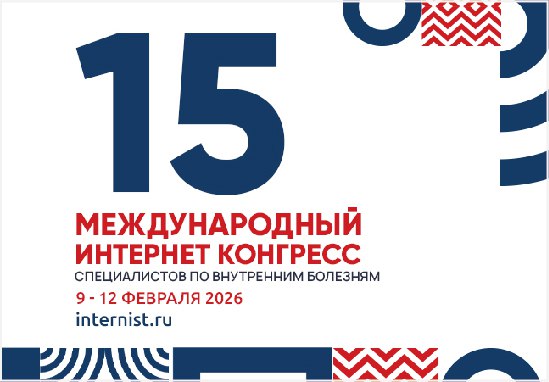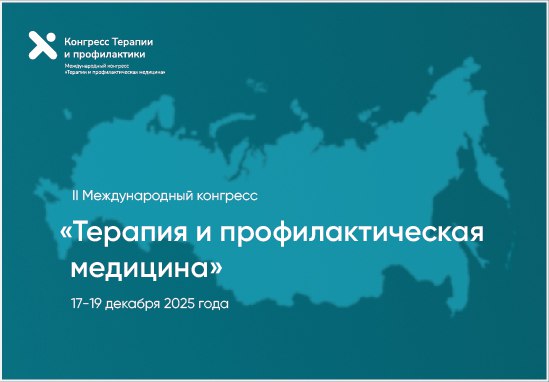Adherence to treatment and state-sponsored drug coverage in patients with myocardial infarction (data from an observational study)
https://doi.org/10.20996/1819-6446-2025-3197
EDN: FUNUWL
Abstract
Aim. To assess adherence to pharmacotherapy and access to state-sponsored drug coverage (SSDC), as well as to identify factors influencing treatment adherence within a year after myocardial infarction (MI).
Material and methods. This observational multicentre study included a sample of patients with MI hospitalized in 13 regions of the Russian Federation from June 2015 to August 2016. The study included 1107 patients with MI aged 35-75 years. Using the Morisky-Green compliance scale (MMAS-4), an analysis of treatment adherence was performed in 889 patients 12 months after MI. Anamnestic data were also collected, a survey was conducted on the receipt of SSDC to identify factors associated with high treatment adherence.
Results. At 12 months after MI, 59.9% of patients were fully adherent to treatment, 21.8% were insufficiently adherent, and 18.3% were not adherent to drug therapy. Men were less adherent to treatment than women (p=0.003), and younger patients were less adherent than older patients (p=0.028). 10.7% of patients received medications at the expense of the SSDC after 6 months, and 6.5% of patients after 12 months. Older age group individuals (p<0.001) and women (p=0.006) received subsidized medications significantly more often. The factors associated with receiving SSDC were contacts with the healthcare system: observation by a therapist (OR 1.53; CI: 1.01-2.34; p=0.044), cardiologist (OR 1.61; CI: 1.04-2.51; p=0.035), dispensary observation (OR 3.56; CI: 2.2-6.22; p<0.001), rehospitalization (OR 1.57; CI: 1.03-2.39; p=0.036). The only factor significantly associated with a reduced likelihood of receiving SSDC was smoking (OR 0.54; CI: 0.33-0.9; p=0.018).
Conclusion. The results of this study revealed insufficient patient treatment adherence during the year after MI. Men and young patients were less adherent to treatment. We observe a small percentage of full subsidized drug provision (6.5%), however, at the time of the study, patients with MI without disabilities and social benefits did not qualify for subsidized provision programs. Patients who had contact with the healthcare system were significantly more likely to receive preferential SSDC: those who had been to a cardiologist or therapist, were under dispensary observation, were re-hospitalized. The only factor significantly associated with a decrease in the likelihood of receiving preferential drug provision was smoking. Among the factors reliably associated with high adherence to treatment according to the results of this study, one can highlight the presence of a stroke in the anamnesis. Receipt of preferential drug provision during the year after MI did not reliably affect adherence.
Keywords
About the Authors
A. V. VeretennikovaRussian Federation
Anastasiia V. Veretennikova
Moscow
A. V. Kontsevaya
Russian Federation
Anna V. Kontsevaya
Moscow
V. A. Kutsenko
Russian Federation
Vladimir A. Kutsenko
Moscow
A. G. Soplenkova
Russian Federation
Anna G. Soplenkova
Moscow
O. M. Drapkina
Russian Federation
Oksana M. Drapkina
Moscow
References
1. Martsevich SYu, Afonina OS, Zagrebelnyy AV, et al. Comparative assessment of long-term survival of patients after primary and recurrent myocardial infarction: a data from the RIMIS registry. Cardiovascular Therapy and Prevention. 2024;23(5):4001. (In Russ.) DOI:10.15829/1728-8800-2024-4001.
2. Kryuchkov DV, Artamonova GV. Primary and recurrent myocardial infarction: differences in the long-term survival of patients. Complex Issues of Cardiovascular Diseases. 2015;(3):47-52. (In Russ.) DOI:10.17802/2306-1278-2015-3-47-52.
3. Lee SH, Hyun D, Choi J et al. Adherence to guideline-directed medical therapy and 3-year clinical outcome following acute myocardial infarction. Eur Heart J Open. 2023;3(2):oead029. DOI:10.1093/ehjopen/oead029.
4. Pereverzeva KG, Lukyanov MM, Martsevich SYu, et al. Long-term medication adherence in patients with coronary heart disease and myocardial infarction in comparison with other cardiovascular diseases. Therapy. 2019;(1):54-9. (In Russ.) DOI:10.18565/therapy.2019.1.54-59.
5. Glezer MG, Polyarnaya NG, Fomina TA, et al. Quality and availability of health care for patients with cardiovascular diseases. Results of sociological research. Cardiovascular Therapy and Prevention. 2023;22(4):3534. (In Russ.) DOI:10.15829/1728-8800-2023-3534.
6. Aziz H, Hatah E, Makmor Bakry M, et al. How payment scheme affects patients’ adherence to medications? A systematic review. Patient Prefer Adherence. 2016;10:837-50. DOI:10.2147/PPA.S103057.
7. Kontsevaya AV, Bates K, Goryachkin EA, et al. Hospital Stage of Myocardial Infarction Treatment in 13 Regions of Russian Federation by Results of the International Research. Rational Pharmacotherapy in Cardiology. 2018;14(4):474- 87. (In Russ.) DOI:20996/1819-6446-2018-14-4-474-487.
8. Pereverzeva KG, Yakushin SS., Loukianov MM, et al. Adherence to the treatment of patients in the long-term supervision period after myocardial infarction (according to the REGATA register). Kardiologiia. 2020;60(10):66-72. (In Russ.) DOI:10.18087/cardio.2020.10.n1264.
9. Mann BS, Barnieh L, Tang K, et al. Association between drug insurance cost sharing strategies and outcomes in patients with chronic diseases: a systematic review. PLoS One. 2014;9(3):e89168. DOI:10.1371/journal.pone.0089168.
10. Després F, Forget A, Kettani FZ, Blais L. Impact of Patient Reimbursement Timing and Patient Out-of-Pocket Expenses on Medication Adherence in Patients Covered by Private Drug Insurance Plans. J Manag Care Spec Pharm. 2016;22(5):539-47. DOI:10.18553/jmcp.2016.22.5.539.
11. Choudhry NK, Avorn J, Glynn RJ, et al. Post-Myocardial Infarction Free Rx Event and Economic Evaluation (MI FREEE) Trial. Full coverage for preventive medications after myocardial infarction. N Engl J Med. 2011;365(22):2088-97. DOI:10.1056/NEJMsa1107913.
12. Fofanova TV, Ageev FT, Smirnova MD, Deev AD. Adherence to Therapy in the Outpatient Setting: the Ability to Identify and Assess the Effectiveness of Therapy. Kardiologiia. 2017;57(7):35-42. (In Russ.) DOI:10.18087/cardio.2017.7.10004.
Review
For citations:
Veretennikova A.V., Kontsevaya A.V., Kutsenko V.A., Soplenkova A.G., Drapkina O.M. Adherence to treatment and state-sponsored drug coverage in patients with myocardial infarction (data from an observational study). Rational Pharmacotherapy in Cardiology. 2025;21(4):310-317. (In Russ.) https://doi.org/10.20996/1819-6446-2025-3197. EDN: FUNUWL
















































